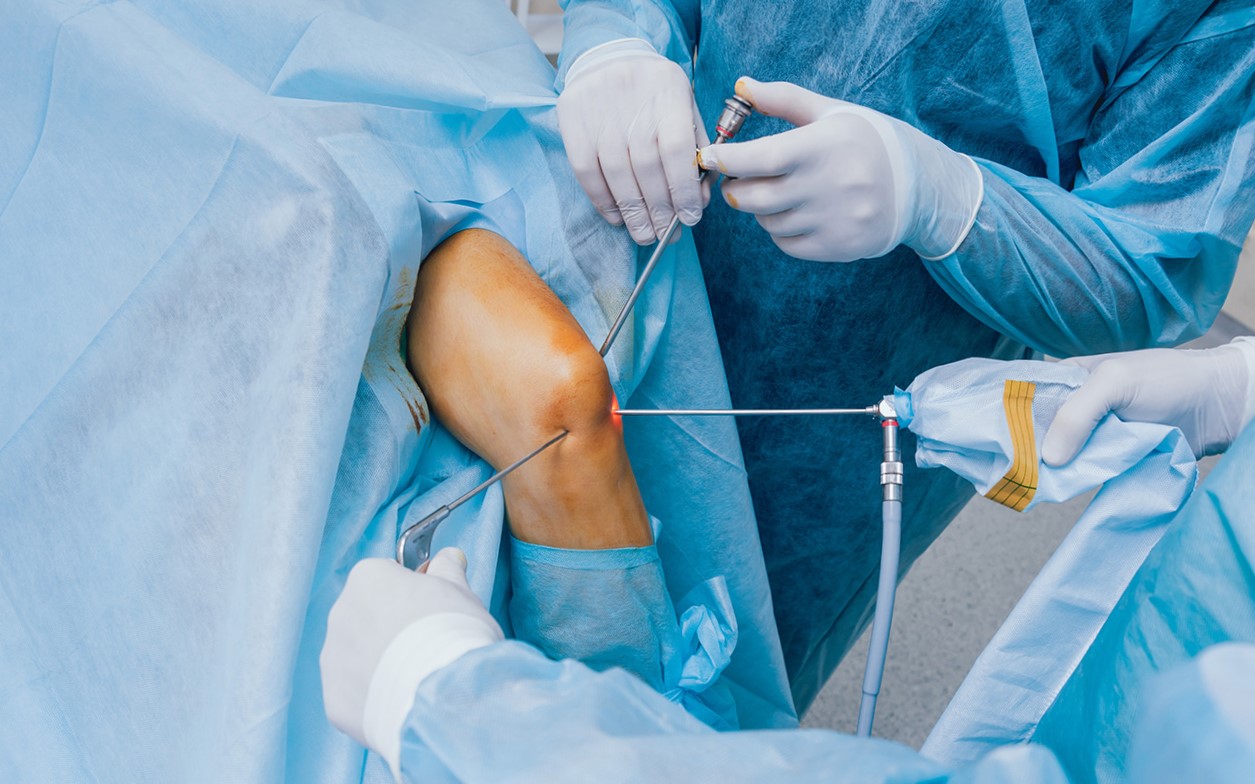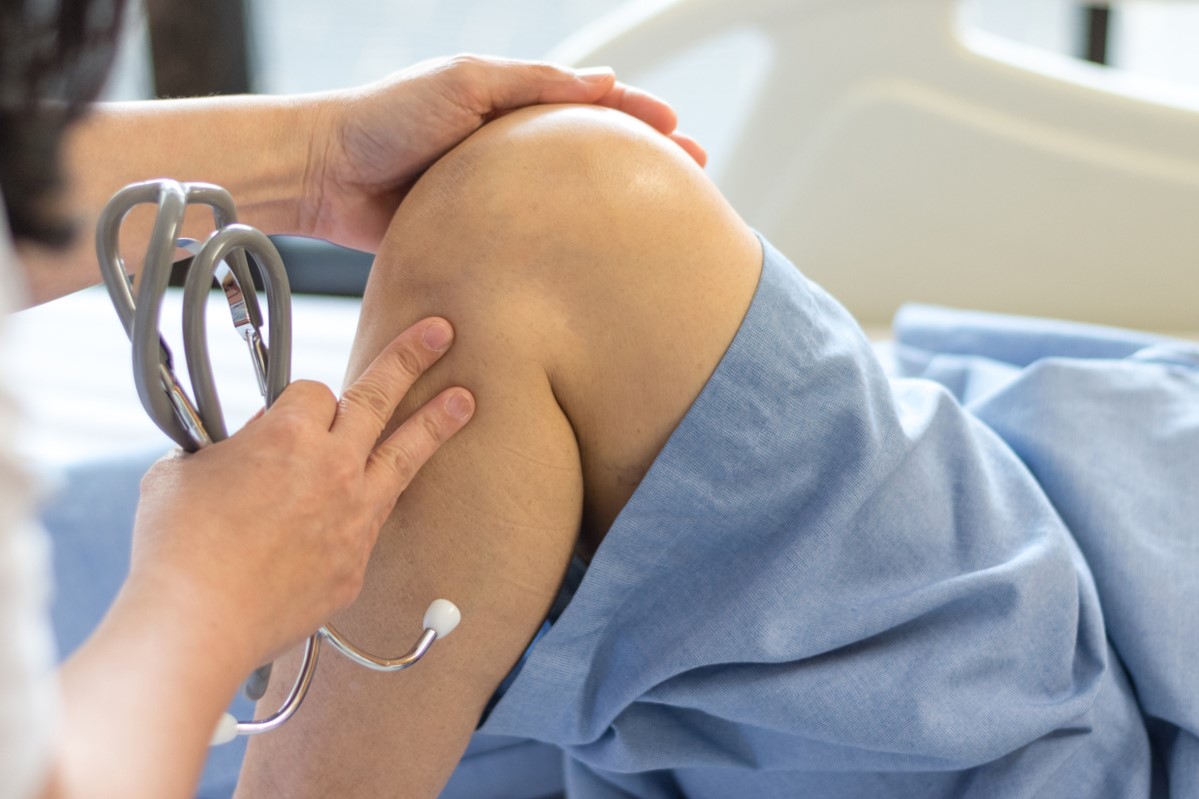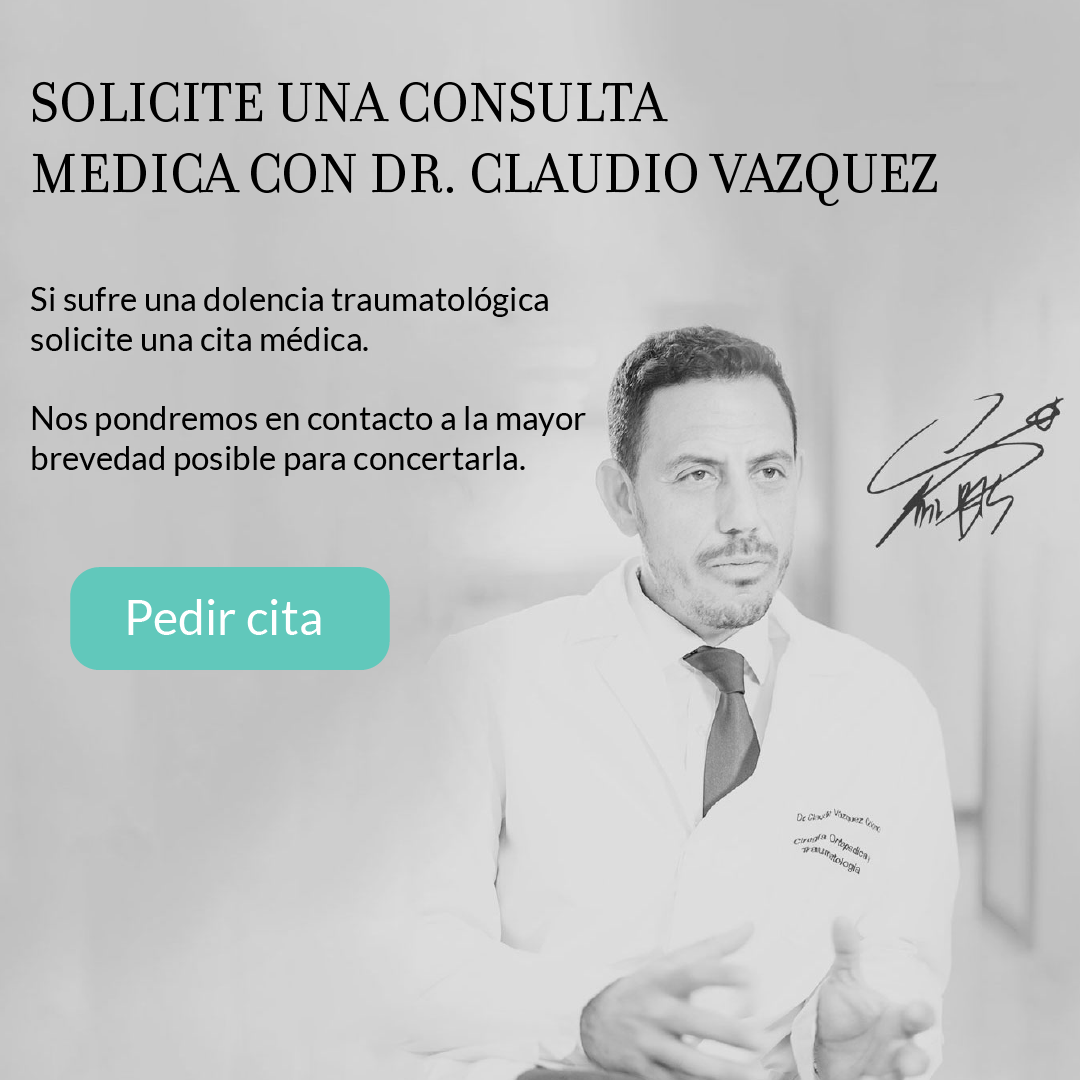KNEE ARTHROSCOPY
Knee arthroscopy in Almería
Knee arthroscopy in Almería is a minimally invasive surgical procedure that has become one of the best options for diagnosing and treating joint injuries. This type of surgery is performed by Dr. Claudio Vázquez, an orthopedic surgeon with extensive experience in arthroscopic techniques, ensuring a high level of precision and safety throughout the entire process.
The intervention is based on making small incisions through which an arthroscope is inserted: a thin instrument equipped with a high-definition camera that transmits real-time images to a monitor. Thanks to this technology, the specialist can view the internal structures of the knee in detail and directly address the affected areas.
This technique combines diagnostic and therapeutic capabilities, as it allows for the treatment of detected injuries in the same surgical act, thereby reducing recovery time and improving functional outcomes. Arthroscopy not only minimizes postoperative discomfort but also decreases the risk of complications and shortens hospital stays—key factors in enabling patients to return to their activities as quickly as possible.
Procedure of knee arthroscopy in Almería
In an arthroscopic knee surgery, the first step involves making a series of small skin incisions, known as portals, that connect to the joint. These openings are usually less than 10 mm in size and are strategically placed to allow the entry of surgical instruments without damaging surrounding structures.
Through the first portal, the vision system is introduced, which includes the arthroscope with built-in light and camera. This allows the surgeon to visually explore the entire joint, identifying any abnormalities or injuries that may be causing pain, swelling, or restricted movement. This stage, known as diagnostic arthroscopy, is crucial for confirming the clinical diagnosis and determining the most appropriate treatment plan.
Once the injuries have been located, other portals are used to insert specific surgical instruments designed to repair or remove damaged tissue. For example, in the case of a meniscal tear, arthroscopic scissors and forceps may be used to trim the injured part or suture it, depending on the nature of the injury. In cases of ligament injuries, grafts can be placed, or partial or total reconstructions can be performed.
The technique is characterized by being minimally invasive, meaning that large incisions are avoided and therefore soft tissue damage, intraoperative bleeding, and postoperative pain are reduced. This results in a faster recovery with fewer complications compared to conventional open surgery techniques.
Injuries treated through knee arthroscopy in Almería

The injuries that can be addressed with this technique are varied, and the choice of arthroscopy will depend on factors such as the patient’s age, the type of injury, and its severity. Among the most common are:
- Knee osteoarthritis: the progressive wear of cartilage covering the joint surfaces, causing friction, pain, and inflammation. Arthroscopy can remove loose fragments and smooth surfaces to improve mobility.
- Meniscal tears: very common both in young people (due to sports trauma) and in older individuals (due to joint degeneration). Treatment may involve partial resection or suturing of the meniscus.
- Ligament injuries: such as tears of the anterior or posterior cruciate ligament, which affect knee stability and require repair or reconstruction.
- Patellofemoral pathology: alignment problems or wear between the kneecap and femur, causing anterior knee pain and limiting physical activity.
- Osteochondral lesions: localized cartilage damage, sometimes accompanied by bone involvement, causing pain and recurrent joint effusion.
The main advantage of arthroscopy over other techniques is that multiple injuries can be diagnosed and treated in the same procedure, avoiding additional surgeries. Moreover, its minimally invasive nature facilitates early return to daily and sports activities.
Benefits and recovery after knee arthroscopy in Almería
The benefits of this technique are extensive and go beyond pain reduction and improved mobility:
- More accurate diagnosis thanks to direct visualization of the joint.
- Shorter hospital stays, as in most cases the procedure is outpatient or requires only one night of admission.
- Less postoperative pain and reduced need for painkillers.
- Lower risk of infection compared to open surgery.
- Smaller, more discreet scars.
The recovery process depends on the type of injury treated and the patient’s overall condition. Generally, after surgery, a short period of relative rest is recommended, followed by a supervised rehabilitation program that includes mobility, strengthening, and stretching exercises. Dr. Claudio Vázquez provides personalized follow-up to adjust recovery intensity and ensure the knee regains optimal function.
In most cases, patients can resume walking with partial support within a few days and return to their usual activities within weeks. Athletes, depending on the sport and injury treated, can progressively resume training under medical supervision.

TELL US ABOUT
YOUR CASE
If you are suffering from a traumatic injury,
you can tell me about your case here and
I will try to answer you as soon as possible.
